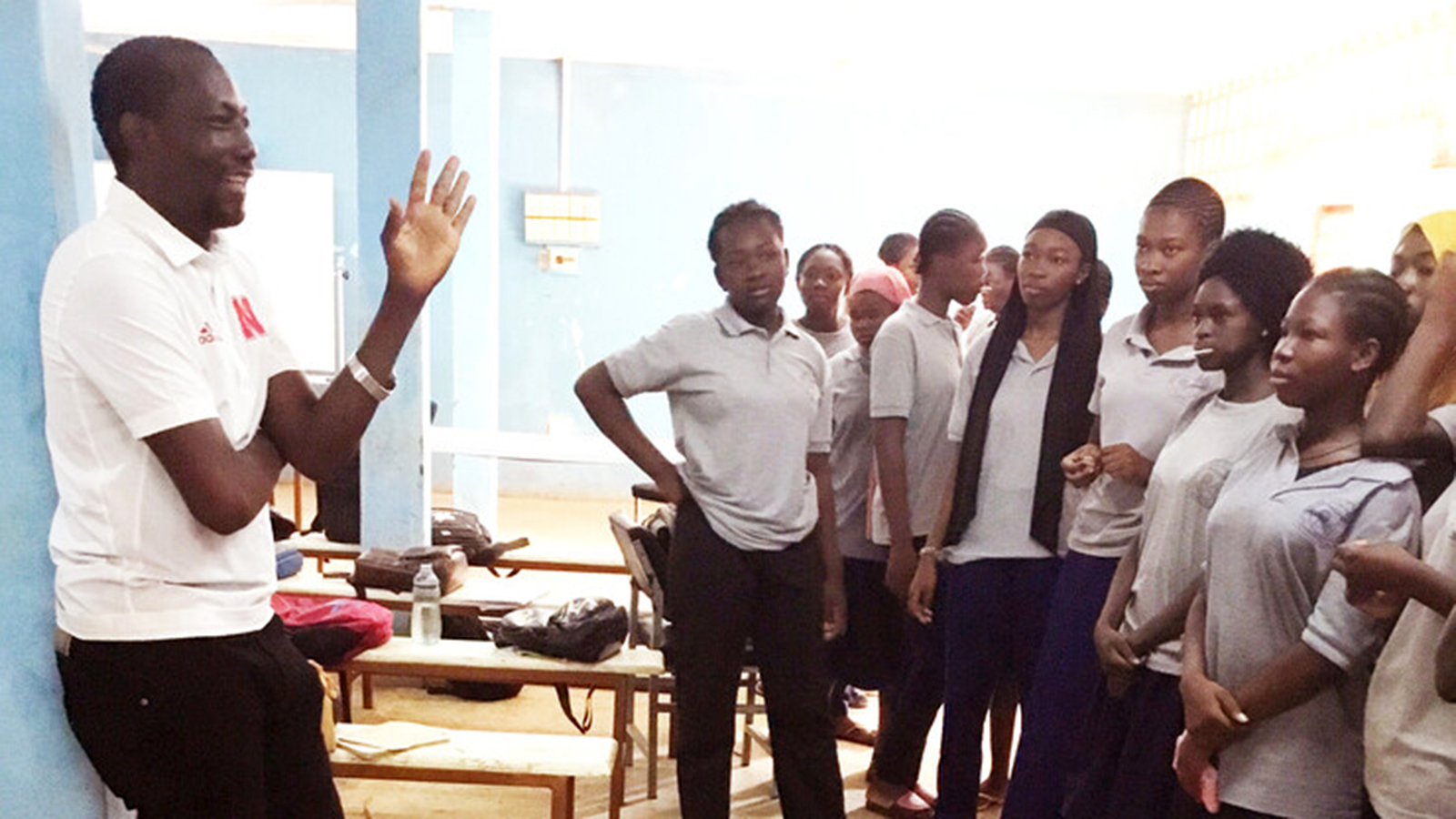
Malgoubri promotes multilingual learning in native Burkina Faso
12 Jun 2024 By Kristina Jackson, University Communication and Marketing
A project by a University of Nebraska–Lincoln researcher is exploring the role language and culture play in education.
Inoussa Malgoubri, a doctoral candidate in teaching, learning and teacher education, wants to connect the home lives of multilingual learners with their classroom experience. Malgoubri recently received a fellowship from the West African Research Association to continue his work in this field. Considering the needs of these students can not only improve educational outcomes, but make them feel more motivated in a world that is becoming increasingly multilingual.
“Classes are going multilingual,” he said. “We have multilingual learners in the classroom. … If they are motivated to learn, it means they’re going to better their grades. Also, it will help us get to know the student more.”
Malgoubri, a Fulbright Scholar from Burkina Faso who also recently received the Maude Hammond Fling Fellowship, is working with teachers and students in his home country to discuss how schools can be more responsive to students’ cultural backgrounds. In May, he held a workshop for seven teachers and 34 students in Burkina Faso.
About 60 languages are spoken in that country, but that diversity is often not represented in classrooms. In fact, in some schools, local languages are banned.
“Students are sometimes disengaged in the classroom when what is being done does not reflect their everyday lives,” Malgoubri said. “Students want to succeed at school, but what’s happening at home isn’t there, and it’s kind of frustrating for them.”
Specifically, Malgoubri wanted to examine how classrooms could incorporate the storytelling style of a group of storytellers known as griots. In several West African countries, griots are oral historians who share the stories of people and communities using melody, rhythm and repetition, often set to instruments. Some griots today might use several languages in one story.
Malgoubri wanted to explore how bringing that storytelling style into the classroom can help students be more engaged, as well as how some elements like rhythm and repetition can help language learning.
“We’re interested in how they weave language and how they use different languages,” he said.
Malgoubri’s own experience informs his work. He grew up speaking three languages at home: his father’s local Moore, his mother’s local Bissa, and French. At times as a young student, he was not allowed to speak the local languages at school, and he saw how multilingual students were sometimes alienated.
“I could understand how difficult it is and see people mocking students because they made some mistakes in French, or they spoke Moore in the classroom and they were punished,” he said. “That is something that affected me in a certain way.”
Malgoubri learned English, then German and Japanese. He felt his multilingual background helped him learn new languages. Having more than one language in mind gave him a frame of reference for parts of speech, syntax and sentence structure as he was learning.
“That makes it easier for them to translate,” he said. “Using the local languages helps them learn additional languages. I found that to be beneficial to me.”
Integrating the language a student speaks at home also opens up communication. Teachers can better explain a concept to the student, and the student can more clearly convey their understanding of the lesson.
“Sometimes they can understand the material, but they don’t have the language for it,” Malgoubri said. “If we allow them to use the languages they have, we can have them express their ideas clearly and not express those ideas in a given way.”
In addition to these academic benefits, these practices can improve the overall environment for students, Malgoubri said. It can help them feel more motivated by bringing something familiar and comfortable to the classroom.
Malgoubri experienced this firsthand in one of his own high school English classes.
“The teacher would include some local languages’ words in his classes, and students would find it welcoming and engaging,” he said.
Ultimately, the schools are there for the people, and making the institution more reflective of the people can make them more effective, Malgoubri said. Rather than widening a gap between their school and home lives, bringing home languages and cultural practices into the classroom enhances learning by demonstrating to students that their language and culture are valued, he said.
“We are disconnecting the school from the community, yet the school is there for the community,” he said. “They can see what they are learning is not something that will take them away from their daily living experiences or their family or their culture, it’s an addition to what they already have.”
College of Education and Human Sciences
Teaching, Learning & Teacher Education
Strong Communities